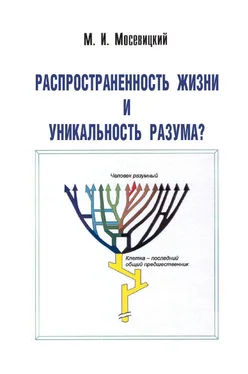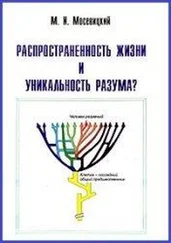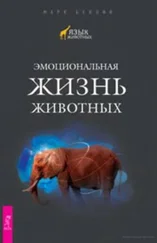Sievers D. and von Kiedrovski G. (1994) Self-replication of complementary nucleotide-based oligomers. Nature, 369, 221―224.
Sigurdsson H. et al. (1991). Glass from the Cretaceous/Tertiary boundary in Haiti. Nature, 349, 482―487.
Simonson A. B. et al. (2005) Decoding the genomic tree of life. Proc. Natl. Acad. Sci. USA, 102, 6608―6613.
Sinkovics J. G. (2001) The place of viruses in the fitree of lifefl. Acta Microbiol. Immunol. Hung., 48, 115―127.
Skophammer R. G. et al. (2007) Evidence for a gram-positive, eubacterial root of the tree of life. Mol. Biol. Evol., 24, 1761―1768.
Sleep N. H. et al. (2001) Initiation of clement surface conditions on the earliest Earth. Proc. Natl. Acad. Sci. USA, 98, 3666―3672.
Smith C. U. (2007) The fihard problemfl and the quantum physicists. Part 2: Modern times. Brain Cogn., Oct. 22.
Smith D. and Yarus M. (1989) tRNA-tRNA interactions within cellular ribosomes. Proc. Natl Acad. Sci. USA, 86, 4397―4401.
Speicer R. A. (1989) Plants of the Cretaceous-Tertiary boundary. Phil. Trans. R. Soc. Lond. B, 325, 291―305.
Spirin A. S. (2004) The ribosome as an RNA-based molecular machine. RNA Biol., 1, 3―9.
Spiteri E. et al. (2007) Identification of the transcriptional targets of FOXP2, a gene linked to speech and language, in developing human brain. Am. J. Hum. Genet., 81, 1144―1157.
Spray J. G. et al. (1998) Evidence for a late Triassic multiple impact event on Earth. Nature, 392, 171―173.
Starikovskaya Y. et al. (1998) mtDNA diversity in Chukchi and Siberian Eskimos: implications for the genetic history of Ancient Beringia and the peopling of the New World. Am. J. Hum. Genet., 63, 1476―1491.
Steele A. (1998) Atomic force microscopy imaging of fragments from the Martian meteorite ALH84001. J Microsc. 189, 2―7.
Steiper M. E. and Young N. M. (2006) Primate molecular divergence dates. Mol. Phylogenet. Evol., 41, 384―394.
Sternberg R. J. et al. (2005) Intelligence, race, and genetics. Am. Psychol., 60, 46―59. Stern R. and Woods C. G. (2006) Evolutionary Genetics: is brain evolution still continuing in modern humans? Eur. J. Hum. Genet., 14, 799―800.
Stewart S. A. and Allen P. J. (2002) A 20-km-diameter multi-ringed impact structure in the North Sea. Nature, 418, 520―523.
St. George-Hyslop P. H. and Petit A. (2005) Molecular biology and genetics of Alzheimer™s disease. C. R. Biol., 328, 119―130.
Stringer C. (2002) Modern human origins: progress and prospects. Philos. Trans. R. Soc. Lond. B. Biol. Sci., 357, 563―579.
Strom R. G. et al. (2005) The origin of planetary impactors in the inner solar system. Science, 309, 1847―1850.
Summers D. P. and Chang S. (1993) Prebiotic ammonia from reduction of nitrite by iron (II) on the early Earth. Nature, 365, 630―633.
Sun C. et al. (2006) The dazzing array of basal branches in the mtDNA macrohaplogroup M from India as inferred from complete genomes. Mol. Biol. Evol., 23, 683―690.
Swisher C. C. et al. (1994) Age of the earliest known hominids in Java, Indonesia. Science, 1994, 263, 1118―1121.
Tagle R. and Claeys P. (2004) Comet or asteroid shower in the late Eocene? Science, 305, 492.
Taillades J. et al. (1998) N-carbamoyl-б-amino acids rather than free б-amino acids formation in the primitive hydrosphere: a novel proposal for the emergence of prebiotic peptides. Origins Life Evol. Biosphere, 28, 61―77.
Tang K. et al. (2007) A New Approach for Using Genome Scans to Detect Recent Positive Selection in the Human Genome. PLoS Biol., 5, 1587―1602.
Tarter J. C. et al. (2007) A reappraisal of the habitability of planets around M dwarf stars. Astrobiology, 7, 30―65.
Terao Y. and Ugawa Y. (2002) Basic mechanisms of TMS. J. Clin. Neurophysiol., 19, 322―343.
Terhune C. E. et al. (2007) Variation and diversity in Homo erectus: a 3D geometric morphometric analysis of the temporal bone. J. Hum. Evol., 53, 41―60.
Tessier-Lavigne M. and Goodman C. S. (1996) Molecular biology of axon guidance. Science, 274, 1123―1133.
Thomas-Keprta K. L. et al. (2002) Magnetofossils from ancient Mars: a robust biosignature in the martian meteorite ALH84001. Appl. Environ. Microbiol., 68, 3663―3672.
Tian F. et al. (2005) A hydrogen-rich early Earth atmosphere. Science, 308, 1014―1017. Tice M.M. and Lowe D. R. (2004) Photosynthetic microbial mats in the 3, 416-Myr-old ocean. Nature, 431, 549―552.
Tiemei C. et al. (1994) Antiquity of Homo sapiens in China. Nature, 368, 55―56. Timoffejev B. W. (1963) Lebensspuren in meteoriten; resultaten einer microphytologischen analyse. Grana Palynol., 4, 92―99.
Timpson N. et al. (2007) Comment on papers by Evans et al. and Mekel-Bobrov et al. on Evidence for Positive Selection of MCPH1 and ASPM. Science, 317, 1036.
Tishkoff S. A. et al. (2000) Short tandem-repeat polymorphism/alu haplotype variation at the PLAT locus: implications for modern human origins. Am. J. Hum. Genet., 67, 901―925.
Tocheri M. W. (2007) The primitive wrist of Homo floresiensis and its implications for hominin evolution. Science, 317, 1743―1745.
Tomilin N. V. (1999) Control of genes by mammalian retroposons. Internat. Rev. Cytol., 186, 1―48.
Torroni A. et al. (2006) Harvesting the fruit of the human mtDNA tree. Trends Genet., 22, 339―345.
Treiman A. H. (2003) Submicron magnetite grains and carbon compounds in Martian meteorite ALH84001: inorganic, abiotic formation by shock and thermal metamorphism. Astrobiology, 3, 369―392.
Treisman M. (1995) The multiregional and single origin hypotheses of the evolution of modern man: a reconciliation. J. Theor. Biol. 173, 23―29.
Trinkaus E. (2007a) European early modern humans and the fate of the Neandertals. Proc. Natl. Acad. Sci. USA, 104, 7367―7372.
Trinkaus E. (2007b) Human Evolution: Neandertal gene speaks out. Curr Biol., 17, 917―919.
Tripati A. et al. (2005) Eocene bipolar glaciation associated with global carbon cycle changes. Nature, 436, 341―346.
Tsiganis K. et al. (2005) Origin of the orbital architecture of the giant planets of the Solar System. Nature, 435, 459―461.
Tubo R. A. and Berezney R. (1987) Identification of 100 and 150 S DNA polymerase alpha-primase megacomplexes solubilized from the nuclear matrix of regenerating rat liver. Biol. Chem. 262, 5857―65.
Udry S. et al. (2007) TheHARPS search for sothern extra-solar planets. XI. An habitable super Earth (5M) in 3-planet system. Astronomy and Astrophysics, 25, 1―5.
Ueno Y. et al. (2002) Ion microprobe analysis of graphite from ca. 3.8 Ga metasediments, Isua supracrustal belt, West Greenland: relationship between metamorphism and carbon isotopic composition. Geochim. Cosmochim. Acta, 66, 1257―1268.
Ueno Y. et al. (2006) Evidence from fluid inclusions for microbial methanogenesis in the early Archaean era. Nature, 440, 516―519.
Underhill P. A. and Kivisild T. (2007) Use of y chromosome and mitochondrial DNA population structure in tracing human migrations. Annu. Rev. Genet., 41, 539―564.
Urey H. C. (1966) Biological material in meteorites. Science, 151, 157―166.
Vagin V. V. et al. (2006) A distinct small RNA pathway silences selfish genetic elements in the germline. Science, 313, 320―324.
Valencia-Sanchez M. A. et al. (2006) Control of translation and mRNA degradation by miRNAs and siRNAs. Genes Dev., 20, 515―524.
van Eekelen. C. A. et al. (2002) On the existence of an internal nuclear protein structure in HeLa cells. Exp. Cell. Res., 141, 181―190.
Vanhaereny M. et al. (2006) Middle Paleolithic shell beads in Israel and Algeria. Science, 312, 1785―1788.
van Zuilen M. A. et al. (2002) Reassessing the evidence for the earliest traces of life. Nature, 418, 627―630.
Vekua A. et al. (2002) A new skull of early Homo from Dmanisi, Georgia. Science, 297, 85―89.
Читать дальше
Конец ознакомительного отрывка
Купить книгу










